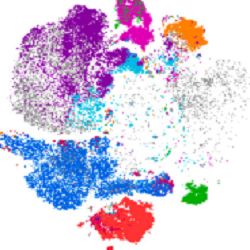
Severe acute respiratory syndrome coronavirus-2 (SARS-CoV-2) continues to present a significant public health risk. Although many are now protected by natural immunity or vaccination, a minority still experience severe COVID-19 disease.
Prof Mike Weekes helped to develop the Cambridge University Hospitals healthcare worker (HCW) screening programme for SARS-CoV-2, and the Cambridge University testing programme for staff and students with symptoms of COVID-19. Part of the ongoing work of his lab is now to identify cellular phenotypes that predict which patients are at risk of progressing to severe COVID-19. They study immune cells collected from screened HCW and hospital patients with milder or more severe disease. This will ultimately enable early therapeutic intervention. Using cell surface proteomics combined with flow cytometry and RNA sequencing data, a comprehensive proteomic analysis of immune cells across the COVID-19 severity spectrum was performed.
Publishing in Cell Reports, Dr Martin Potts and colleagues show that unusual T-cell and monocyte populations emerge in severe disease, expressing a distinct set of cell surface markers. Further longitudinal studies are required to determine the prognostic value of these markers, and whether they may also be associated with long COVID.

